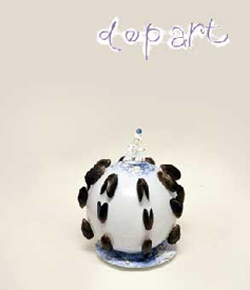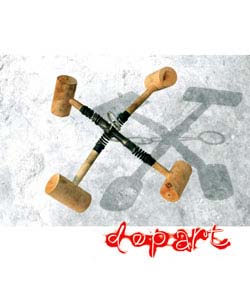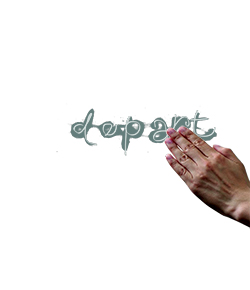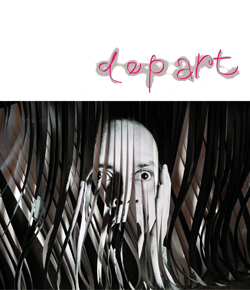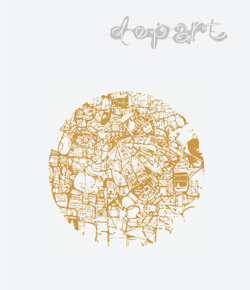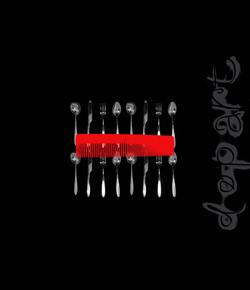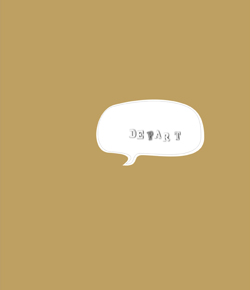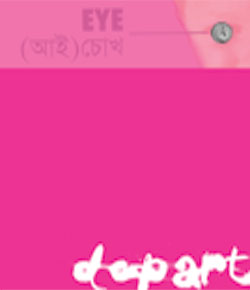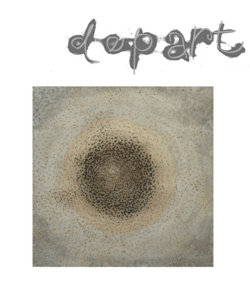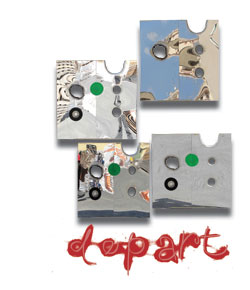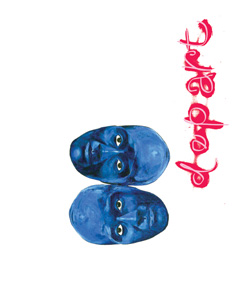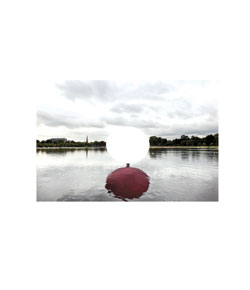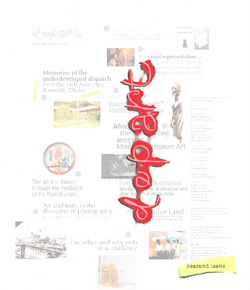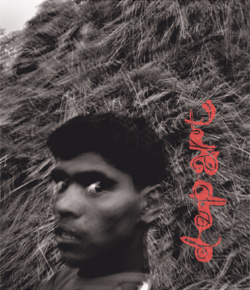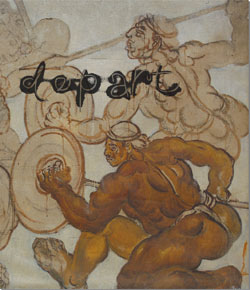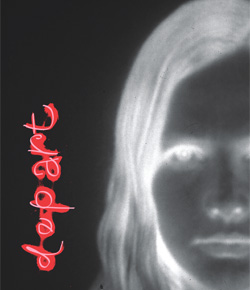exposure
The plane of appearance
Ripon Saha's recent paintings

Ripon Shaha's recent body of works calls into question the logic of the Late-Capital era society. The desublimated sensibility of this young artist, one who bewails the market monopoly and its impact on the society under consumer capitalism, constructs a horizontal plane, pulling fragments from other media- popular representations of literary and political icons and scientific apparatus in adverts, pamphlets and text books for their metonymic implication.
Though his language revolves around the semantic modalities through which any modern society on the periphery keeps changing its lithosphere, he attempts to examine the meaning of such modalities in a market situation. The Capital Order and the attendant pandemonium are two of his primary meditations, as is the politics that motors them. So the choice of image is not as subjective as it seems, as the artist's intention is to let the images speak against the wholesale commodification of knowledge and culture.
Ripon looks at the present from the end where we regularly encounter reality in its represented forms through psychogeographies such as the print and the electronic media and other apparatus of mass control, where the Symbolic Order is operational, keeping us fully inundated. As the chaos caused by displacement of 'value' through financialization of the entire society spills over to the rest of the social arena, engulfing institutions, and even the discursive spaces, it also affects culture, thereby marring its consecrated presence in the society. Ripon's rebuttal is meant to address these loci of value erosion.


The much touted capacity of culture to mirror the higher achievements of the Modern civilization, thus, stands challenged. The artist, bent as he is on making appear the displacement of the 'self' and the lack of 'psychic unity' (to borrow CO Korsagaard's phrase) of such a self, which is necessary to ensure 'agency', makes the onlookers course through the affected turfs, the locales where 'truth value' is being made to stilt on both old and new myths.
The pattern of significations that appears through a certain hierarchized arrangement of signs and symbols, in Ripon's climate, through the combined techniques of painting and stenciling in acrylic and spray paint, thus, is made to face against a different set of values. The images are not made to look empty but to be invested with new meaning. In seemingly ordered, and, at times even banal arrangement, Ripon compiles across the fields of his canvases personages such as Marx, Rabindranath, or even the bloated figure of the capitalist rendered in accordance with the old-style Left cartoon, and also objects such as the early printing press, the industry structure, or chemistry apparatus, etc. In such a multilayered freight one detects a critique of the civilization that has led to the prolificacy in knowledge, culture and science, but failed to deliver the social goods.

As an artist working in an era when depthlessness and the sheen of the surface reign supreme over everything else in contrast to claims to the higher achievements of humanity, which is akin to semiotic projections, Ripon appears as a critic of both today's reality assessed through the represented reality as well as the false hope of democracy and globalised capitalism. He ups his ante in trying to deliver a narrative where there is focus on the urban, social and political problematics, but in his comingling of sourced images the sense of 'going nowhere' is the predominant sentiment.
As Herbert Marcuse writes in his famous One-Dimensional Man: 'What is happening now is not the deterioration of higher culture into mass culture but the refutation of this culture by the reality.' Ripon's stratagem aligns with such a claim, as we witness how he deliberately sets his personal emotions aside in order to home in on the issue of collective failure to resist the dominant order. Yet, in such a collapsing social reality, where he appears to bemoan the present, he never talks about it in relation to an imagined glorious past, which only proves that he is not a lamenter. He seems to grapple with the notion of painting and image-making as if it were a social conundrum he has taken to solving. By harnessing fetish images and signs, Ripon acquires the tool to answer issues, rather than raise questions, related to the finance-driven world of our time.
Fetish images are those that are rendered shop-worn through overuse. As we are able to elicit meaning from them in relation to the social semiotic framework as well as through the rearrangement the artist muster, they tend to speak to us. Thus, the logic of society stands challenged through another one – the logic of expressivity, where the idea of signification enters a new regime.
Born in 1982, Ripon Saha, is now a Chittagong-based freelancer, and is also poised to explore the new media as part of his strategy to rebut as a sensitized spectator from within the spectacle society. Once a member of the non-profit Porapara Space for Artists, which promotes site-specific art and performance in the port city, he is now on and off other such new collective platforms that are emerging, but as active as before to put across his ideas to the public domain.
- DEPART DESK






